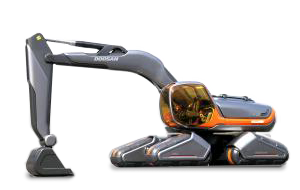 Additive Manufacturing (AM) is a collective name given to the technologies leveraged for building 3D objects through addition of materials in layers, be it concrete, metal, plastic or anything else. As the very name suggests, it is about adding rather than removing material, as is common in cases of conventional machining. This unique methodology has its roots in the photo sculpture and topography of the 1800s, although the first successful attempts can be traced back to the 1970s. The additive manufacturing technique has become very prevalent during the last couple of decades, making its way into a plethora of industrial applications.
Additive Manufacturing (AM) is a collective name given to the technologies leveraged for building 3D objects through addition of materials in layers, be it concrete, metal, plastic or anything else. As the very name suggests, it is about adding rather than removing material, as is common in cases of conventional machining. This unique methodology has its roots in the photo sculpture and topography of the 1800s, although the first successful attempts can be traced back to the 1970s. The additive manufacturing technique has become very prevalent during the last couple of decades, making its way into a plethora of industrial applications.
How the Additive Process Works
All AM techniques involve the use of a computer, layering material, machine equipment and Computer Aided Design (CAD), otherwise known as 3D modeling software. The process calls for the production of a CAD sketch, following which data is read from the CAD file by the AM equipment; then successive layers of sheet material, powder, liquid, etc. are laid down to formulate a 3D object. A number of techniques like Stereolithography, Fused Deposition modeling, 3D printing, etc., constitute the AM procedure.
The Additive Industry
Since this technology offers unbounded freedom to designers, and is eco-friendly and energy efficient due to its great material utilization, many industries are making AM a part of their production process in order to create value across the entire production chain. Already used for the production of lightweight machines, consumer products, architectural models, and medical items like advanced-quality bone transplants, the additive technique is also leveraged for creation of fuel nozzles for new aircraft engines – thanks to General Electric, one of the key players in the world of AM. Other key players in this domain include 3T RPD of UK, Biomedical Modeling, Inc. of U.S, Arcam AB of Sweden, and 3D Systems Corporation of U.S., amongst others.
Expected to grow at 13.5% CAGR to reach the $3.5 billion mark by 2017, the AM market is not free from challenges. The major ones are regulatory hurdles in many countries, process comprehension and control, and characterization of material during development. In spite of these challenges, novel and enhanced technologies, large application area, financial support from government, and ease of customized development at low cost continue to trigger the growth of this industry.
Investment Opportunities in AM
 With a number of industrial sectors showing interest in AM, it certainly holds immense potential for investors. Considerable amount of public and private sector investment has been made to initiate the technological readiness for AM in various countries. Research and development activity in the AM domain is at its peak, especially in the healthcare, aerospace and creative industries. The image to the left shows Bono with a 3D printed microphone that is actually strong enough for the artist to swing from.
With a number of industrial sectors showing interest in AM, it certainly holds immense potential for investors. Considerable amount of public and private sector investment has been made to initiate the technological readiness for AM in various countries. Research and development activity in the AM domain is at its peak, especially in the healthcare, aerospace and creative industries. The image to the left shows Bono with a 3D printed microphone that is actually strong enough for the artist to swing from.
3D printing companies such as Stratasys (NASDAQ:SSYS) and 3D Systems (NYSE:DDD) have been quite attractive investment opportunities over the last few years as the industry enters a growth phase in its life cycle. As more mainstream applications are uncovered for the technology, investors are provided with the opportunity for strong returns. However, there could be some vulnerability in these stocks against a changing competitive backdrop, as the industry rotates from a less sophisticated manufacturing process and printers, which are currently more convenient to develop.

